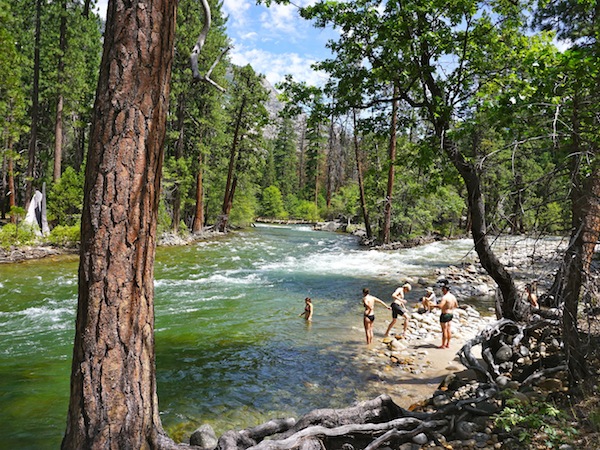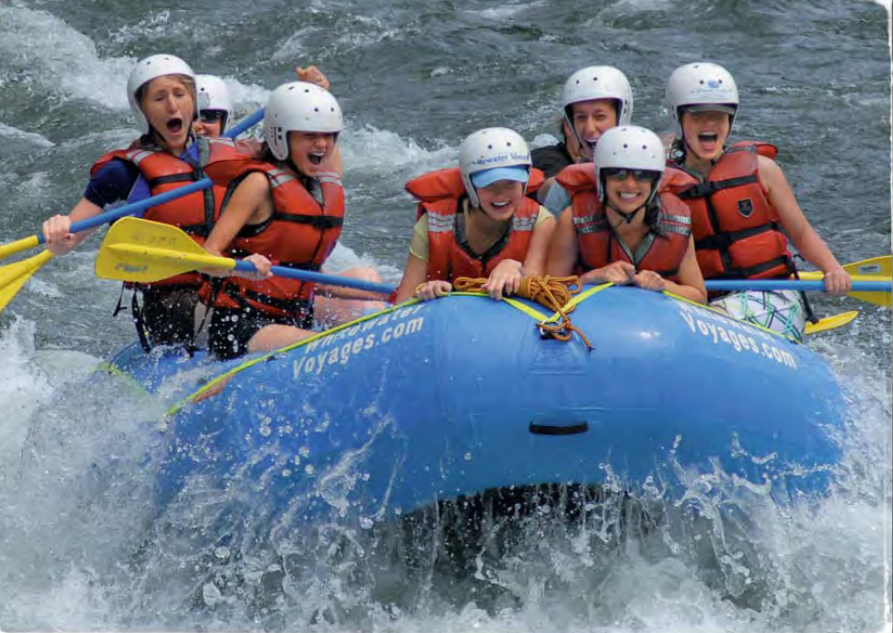
Hetch Hetchy Reservoir not only drowns a valley, it cuts off access to the surrounding canyon.
We’ve said it a million times. Restore Hetch Hetchy understands water storage is essential and that we do need dams (as well as improved groundwater storage). We simply don’t believe an iconic glacier carved valley in Yosemite National Park is the the right place for a dam and reservoir – especially when there are alternatives for storing the water elsewhere.
Dams do provide benefits. In California and the semi-arid west, dams store water from winter rains and spring snowmelt for delivery to cities and farms in summer and fall, as well as for carryover supplies in case the following year is dry. Dams also make it possible to generate hydropower. And many dams (although not O’Shaughnessy Dam at Hetch Hetchy) are required to maintain space for flood control.
In most cases, dams and reservoirs are managed to provide public benefits beyond water supply, hydropower and flood control. These benefits include:
- Reservoir-based recreation – swimming, fishing, camping etc.
- Healthy fish populations – by releasing sufficient instream flows for spawning and rearing downstream – sometimes to mitigate for the loss of spawning habitat caused by their construction, and
- River-based recreation – by releasing flows in conjunction with opportunities for rafting, canoeing and kayaking.
Even given Congress’ unprecedented permission to build a dam in national park, with regard to these other public benefits – San Francisco has struck out.
Strike 1: As we have explained at length in Keeping Promises: Providing Public Access to Hetch Hetchy Valley, Yosemite National Park, San Francisco committed to provide substantial access to the Hetch Hetchy area if it would be allowed to dam the valley, The City then reneged on those promises. Today, a paucity of trails and the City’s refusal to consider a non-polluting electric tour boat prevent visitors to Yosemite from accessing the backcountry in their national park. (East Bay MUD, for example, provides rental canoes and allows camping at its Pardee Reservoir.)

Backpackers frolic in the hard-to-reach Grand Canyon of the Tuolumne (Photo: Outdoor Adventure Club)
Strike 2: San Francisco continues to resist providing additional flows to help downstream fisheries. Along with other water interests on the Tuolumne River, San Francisco has declined to sign even the Newsom Administration’s (compromise) voluntary agreement to provide modest flows and funds to improve spawning habitat. The agreement was signed by a multitude of water agencies, including the largest in the Central Valley and the Metropolitan Water District of Southern California. A plethora of prominent environmental and fishing groups is applying pressure on San Francisco to provide additional water for downstream fisheries.

Chinook salmon (Photo: National Park Service)
Strike 3: In the wake of California’s overabundance of solar power during sunny afternoons, San Francisco has abandoned its long-standing practice of releasing hydropower from Cherry Reservoir on a schedule to benefit whitewater rafting and kayaking on the very popular “Lumsden” stretch of the Tuolumne River. A few miles north on the American River, the Sacramento Municipal Utilities District is abiding by its agreement to provide recreational flows below Chili Bar Dam.

The Tuolumne is a wonderful whitewater experience. Photo: Whitewater Voyages
Our mission is to return the Hetch Hetchy Valley in Yosemite National Park to its natural splendor ─ while continuing to meet the water and power needs of all communities that depend on the Tuolumne River. We can then return to the people Yosemite Valley’s lost twin, Hetch Hetchy – a majestic glacial-carved valley with towering cliffs and waterfalls, an untamed place where river and wildlife run free, a new kind of national park.
Even with the dam in place, however, San Francisco seems to be maximizing its own financial benefit at the expense of recreation and the environment – more so than other communities in California.
San Francisco needs to do better for the public on all fronts.
